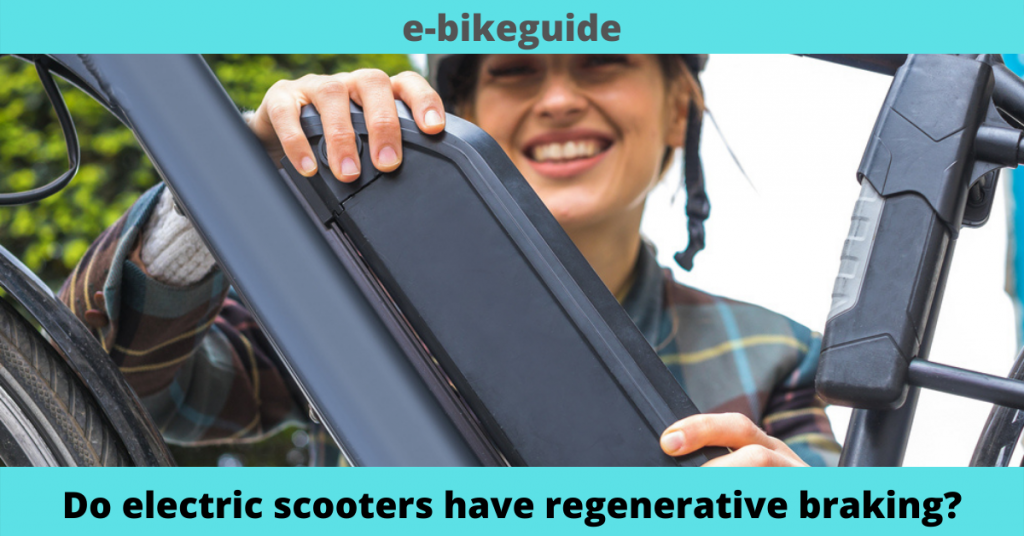Energy Wastage, a World Crisis…
Energy wastage has now become a significant challenge faced by the world. Due to the rapid increase in the world population, vehicles are also rising. Serious threats to the environment and human health brought by vehicle-related emissions include air pollution, global warming, and the rapid depletion of petrol resources. The energy dissipated through traditional vehicles has also become a major contribution to this issue. When considering highly populated cities, the energy dissipated in braking is wasted as heat through the brake friction due to frequent stops and intersections. These problems force countries to ensure clean air, energy savings, and novel energy applications. This has paved the way for numerous countries to adopt policies to increase the number of electric vehicles, aiming to improve air quality by reducing pollutant emissions. Additionally, the resulting worldwide energy crisis compels nations to turn to alternative energy sources and retain maximum energy from existing sources. Regenerative Braking System is one such crucial energy-saving application.
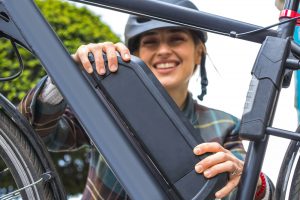
The term ‘Braking’ in a moving vehicle refers to the application of the brakes to reduce its speed or terminate its movement by depressing a pedal. In braking systems on conventional vehicles, friction is used to counteract the forward momentum of a moving vehicle. As the brake pads rub against the wheels, excessive heat energy is created, which dissipates into the air wasting about 30% of the vehicle’s generated power. Over time, this reduces the vehicle’s fuel efficiency, like more energy from the engine is required to replace the energy that was lost by braking. Most of it is released in the form of heat and becomes useless. That energy, which could have been used to do work, is wasted. The most effective solution for this issue is the Regenerative Braking System.
What is Regenerative Braking?
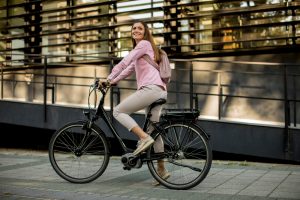
The Regenerative Braking System can recollect much of the kinetic energy and convert it into electrical energy or mechanical energy. Thus, the produced energy can then be stored as mechanical energy in flywheels or as electrical energy in the automobile battery, which can be used again.
The effect of regenerative brakes is less at lower speeds as compared to that at higher speeds of vehicles. Therefore, the friction brakes are needed in a situation of regenerative brake failure to stop the vehicle entirely.
Electric vehicle systems comprise one area to which Regenerative Braking Systems can be applied widely. During recent years, electric vehicles have become highly popular due to their significant fuel economy and minimum vehicle emissions. These vehicles have the advantages of low emission, low noise, and high energy efficiency. As for the energy storage system of electric vehicles, the battery has a high energy density and a very large storage capacity. However, the high cost of batteries and the limitations of their use in heavy vehicles limits the use of these new-generation vehicles. Regenerative braking was developed to overcome this issue as a process in which some of the kinetic energy generated during deceleration in vehicles is stored in the battery and ultracapacitor. Accordingly, electric vehicles use the regenerative braking system to increase energy efficiency by recovering some of the braking energy.
Regenerative braking has the potential to conserve energy by boosting fuel economy while reducing emissions that cause air pollution. Two versions of regenerative braking systems can be identified.
- Series regenerative braking
- Parallel regenerative braking
The series regenerative braking system is based on a combination of a friction-based adjustable braking system and a regenerative braking system that transfers energy to electric motors and batteries under an integrated control strategy. The second type is a friction-based parallel braking system in which the regenerative braking system is operated sequentially operated without an integrated control. This system has the advantage of a simple structure and can be used without modification in existing friction braking systems. Considering the implementation of a regenerative braking system, a series system is more complex than a parallel system, but the energy recovered is higher.
Regenerative braking is observed only when the battery is fully charged and needs to be performed by releasing energy. Therefore, electric vehicles require mechanical brakes to increase the roughness of the wheel for deceleration. In two-wheel electric vehicles, mechanical brakes are often used to stop or slow the vehicle. The kinetic energy lost during braking can be converted back into electrical energy and stored in the battery or ultracapacitor. Proper management of this energy assists in its careful control without causing any problems for the motor, driver or battery.
Electric Vehicles and Regenerative Braking System.

Electric vehicles can easily implement traction and/or braking control systems on the drive wheels. Since the motor is already part of the system, it is only necessary to implement a minimum of software and hardware to control that torque in the wheel. The advantage is that electric motors can also be used as power generators. When a positive torque is required, the motor consumes battery power, and when a negative torque is applied, motor power is delivered to the batteries. Nowadays, traction and braking controls are widely implemented in vehicles, with the aim of reducing braking distance or providing better maneuverability in emergency situations. Some of these systems are the Antilock Brake System (ABS) or the Traction Control System (TCS). These systems have evolved from their origin, using increasingly sophisticated algorithms and complex control architectures. Fuzzy logic, sliding control, control by artificial neural networks, and nonlinear control are examples of such widely used control methods. These systems try to optimize the longitudinal and lateral force in the tire, obtaining the maximum available force in the wheel-road contact during braking and traction processes.
At present, regeneration systems in commercial electric vehicles do not take advantage of the characteristics mentioned above. A maximum level of regeneration is fixed for safety or battery capacity reasons. Therefore, they do not take advantage of the maximum available longitudinal force in tire-road contact. This way, these systems do not get the highest possible regenerated energy.
In addition, most of the research on regeneration systems has focused on four-wheeled vehicles, although some authors have addressed this issue for two-wheeled vehicles. Most of them only deal with the electrical part of the system and do not take into account vehicle-road interaction. Robinson and Singh developed a control technique that applies a braking torque to the rear wheel, regenerating that braking energy from the rear wheel to the battery system. Moreover, the system controls the slip to prevent the locking of the rear wheel during braking.
As mentioned, both energy-saving and safety are fundamental subjects of study in vehicles. Any system proposed should aim to improve the safety of electric vehicles as well as save energy in a novel way. The regenerative braking system, it makes use of fuzzy control that estimates the road adhesion and determines the optimal regenerative braking torque without causing the wheel to slip. Thereby, the system would reduce the use of the traditional rear friction brake, depending on road conditions due to the high braking torque that can be achieved with the electric motor.
As a result of recent research, a new electric braking system is proposed for a brushless DC (BLDC) motor-driven electric vehicle (EV) based on stopping time and energy regeneration. This new braking system is developed by combining various regenerative methods and plugging. Other than the existing performance measures such as boost ratio, braking torque, and maximum conversion ratio, stopping time and energy recovery for various methods are studied for different running conditions. It is observed that the stopping time is less for plugging and increases in the order of two, three, and single switch methods. In addition, energy recovery is better for single and three switch methods. Based on these performances, a new braking strategy is proposed that combines all the regenerative braking methods, including plugging and switching among themselves based on the brake pedal depression.
Electric mobility offers a low cost of travel along with energy and harmful emissions savings.
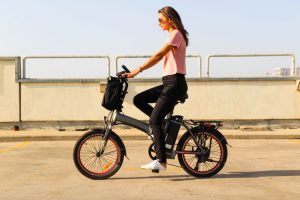
Nevertheless, a comprehensive literature review is missing for the prospects of electric vehicles in developing countries. Such an overview would have been instrumental for policymakers to understand the barriers and opportunities related to different types of electric vehicles (EVs). Later, relevant reports and articles related to barriers and opportunities were found by using Google Scholar and studied. Results reveal that electric four-wheelers are not a feasible option in developing countries due to their high purchase price. On the contrary, electric two-wheelers may be beneficial as they come with a lower purchase price.
Electrification of mobility offers numerous benefits such as reduction of oil dependency and improvement of the environment. Electric mobility is represented by electric vehicles (EVs), which consume less energy and emit zero tailpipe greenhouse gases (GHG). Battery electric vehicles (BEVs) have largely been praised for their better energy-efficient system than internal combustion engine vehicles (ICEVs). Unfortunately, no prior research has been performed which directs the type of EVs that could be more successful in developing countries. There are numerous forces that push and pull the equilibrium state of the established market for different mobility vehicles. Similarly, there are several driving forces associated with EVs’ adoption, such as the reduction in greenhouse gas emissions (GHG), efficient energy use, gasoline savings, and low operational cost. The resisting forces influencing the acceptance of EVs include high purchase price, inadequate range, slow charging, and new production adoption anxiety. Accordingly, a comparative analysis was performed to understand the resisting and driving force for adopting the different types of EVs in developing countries. Results highlighted that electric two-wheeler and hybrid electric vehicles hold more potential in developing countries than electric four-wheelers.
Regenerative Braking Systems on Electric Scooters.

Focusing on electric two-wheelers, electric scooters prove to be the most effective in adopting a regenerative braking system. One of the most important components of an electric scooter is the brakes. Since most e-scooters can ride at high speeds, it’s important to have reliable electric scooter brakes to help you stop at crucial moments and keep you safe from accidents. However, it is of utmost importance to use electric scooter brakes effectively and safely.
A variety of brakes can be identified in the mechanical braking system of an electric scooter. Identification of these different electric scooter brakes and their functionalities guides the way in highlighting the effectiveness of regenerative brakes. Such different electric scooter brakes identified are as follows.
-
Disc brake
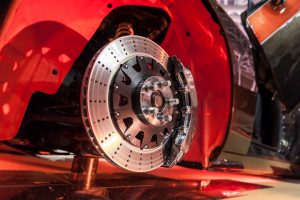
Disc brakes are the most common electric scooter brakes used on e-scooters. In fact, almost all electric scooters use disc brakes due to their reliable and strong braking power. Normally, disc brakes are activated by pulling a hand lever in your controls.
-
Foot brake
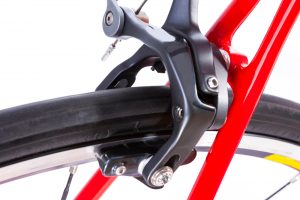
An electric scooter foot brake, also called a rear brake, is a hinged fender or mechanism on the rear wheel. Riders simply need to step on it to slow down or come to a stop. These are quick and easy to use, so they are often used for decelerating or sudden stops. However, a fallback in using these brakes often is, they can wear or tear your electric scooter tires.
-
Drum brake

Drum brakes are found inside the wheel and are often controlled using a hand lever. They offer the same effectiveness as disk brakes, making them a common type of brake in e-scooters. However, one downside to using them is that you would need to disassemble the entire wheel to fix them.
-
Electronic brake

An electronic brake uses a switch, push button, or lever to help you stop or slow down. It’s the most convenient to use since riders only need to activate it from the e-scooter dashboard. However, its braking performance is often poor.
-
Regenerative brake

Recently, most electric scooters tend to use regenerative brakes because of their battery-saving benefits. It takes the kinetic energy when decelerating and turns it into stored energy. This implies that the riders can save more on battery power when they decelerate or stop. As a result, you would also be obtaining the most range for your electric scooter.
In consideration of the safest brake to be used in an electric scooter, disc brakes are often regarded as the safest electric scooter brake. However, getting an electric scooter that offers multiple braking systems offers the best possible protection and safety for your rides.
Precedence in having Regenerative Braking Systems.
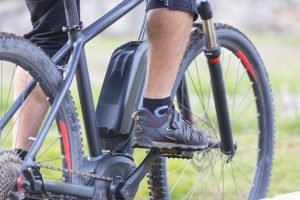
Due to the high efficiency, reliability, and safety of rides, regenerative brakes have proved to be the most effective to be used in electric scooters. Accordingly, a few measures should be considered in ensuring the effective and safe usage of electric scooter brakes.
-
Practice good riding posture
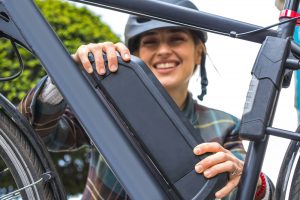
Having good posture will make it easier, safer, and more comfortable to ride an e-scooter. As a rider, you should make sure to stand up straight and balance yourself on the e-scooter. Place one foot behind to help you balance on the deck. It will also help you reach the foot brake easily, especially during emergencies.
When braking, you should bend your knees slightly to lessen the impact on your legs and to have better balance and control while decelerating. Also, it’s important that you learn to use each of your e-scooter brakes to help you apply the right brake at the right time.
-
Control your speed

Avoid riding at top speed, and instead, practice riding at a safe speed or pace. Riding at high speeds can be dangerous, as it will be more difficult to stop. Moreover, when you ride at high speeds and suddenly need to stop, you can fall over and injure yourself. So, learn to go at a steady pace and control your speed.
In addition, learn how to stop gradually. When descending on hills, always keep one foot behind the foot brake so you can control your speed. Also, avoid pressing down on the brakes sharply to avoid skidding or falling over. Make sure to practice controlling your speed and braking properly at certain speeds.
-
Use your feet on uneven ground.
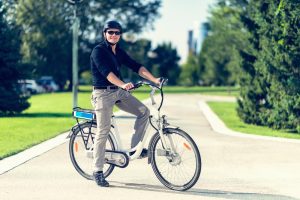
It’s difficult and dangerous to use brakes on uneven or slippery ground. After all, brakes are less effective on uneven or wet surfaces, and it’s easier to lose balance. So, first, slow down and ride at a comfortable speed.
When braking, it’s best to use an electronic brake to decelerate and use your feet to come to a full stop. Since you are riding at a slow pace, using your foot will be fine as long as you safely place it down on the ground. Placing your feet down will also help you stabilize yourself on uneven or slippery surfaces.
With proper precautions and safety measures ensured, the regenerative braking system proves to be the most effective in an electric scooter. Thereby, almost all electric scooters consist of the regenerative braking system at present, mainly due to its high efficiency.
A rare case when regenerative braking cannot occur is when the battery is fully charged, where braking needs to be affected by dissipating the energy in a resistive load. Also, at low speeds, regenerative braking may not be effective and may fail to stop the vehicle as required. During such crucial moments, the mechanical braking system is also critical. Therefore, the highest possible protection and safety can be ensured in electric scooters that offer multiple braking systems.
